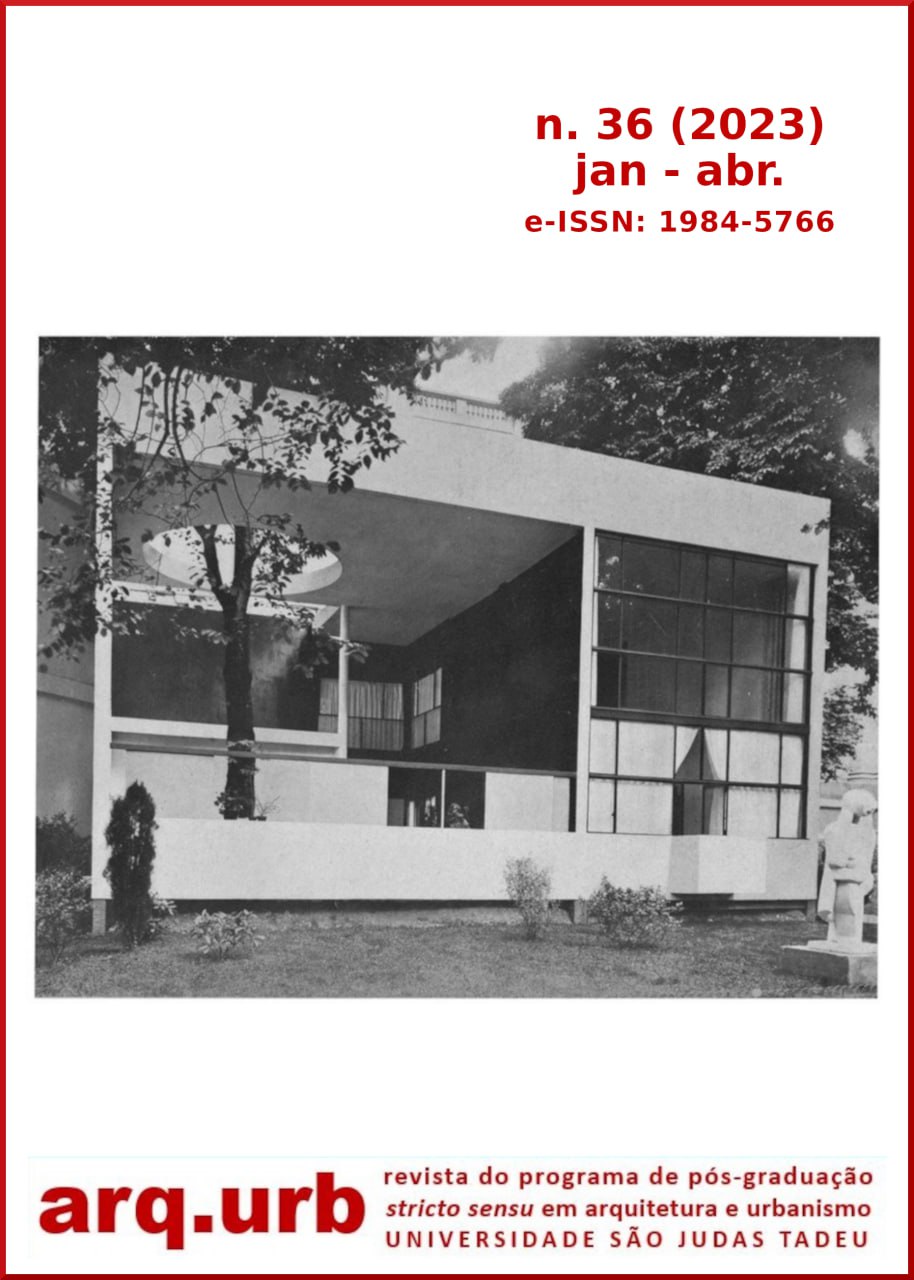The “kinship” between convents:
the franciscan school of Germain Bazin
DOI:
https://doi.org/10.37916/arq.urb.vi36.614Keywords:
Fransciscan convents, Cairu, ParaguaçuAbstract
This paper it aims to discuss the stylistic unit confered, by Germain Bazin, in 1950 decade, to the franciscan convents in the northestern Brasil, built during colonial period. For that, they were developed the bibliographic and documentary review, and studies about the case with the comparative analysis of two these convents in matter: Santo Antônio (or São Francisco) from Paraguaçu in the municipality of Ca-choeira; and Santo Antônio Convent in Cairu, both in the state of Ba-hia. Their facades reflect similarities and their frontspices refer to a leyout of the same architectural composition, although they have diferente plants. In addition numerous and renowned scholars wrote about those convents, but the documental gap did not help in identifying the authors of their projects, and the dates of their origins are unclear in the bibliography found. Theories have been launched about the construction of the franciscan convent, but without proof. So, it was not possible to determine the relationship between the studied buildings however visibly observable. So, the conclusions can hardly be finalized, but the questions leave open ways for new researchs.
Downloads
References
ARGOLO, José Dirson. O convento franciscano de Cairu. Restauração de elementos artísticos. Monumenta/IPHAN, 2010.
AZEVEDO, Paulo Ormindo de; AZEVEDO, E. B. de. Inventário de proteção do acervo cultural. Bahia, v. 2, Recôncavo, I parte, 1982.
AZEVEDO, Paulo Ormindo de. Inventário de proteção do acervo cultural. Bahia, v. 5, Litoral sul, 1988.
________ . Ruínas do Convento e Igreja de Santo António (Paraguaçu), Cachoeira e São Félix, Bahia, Brasil, Arquitetura religiosa; Fundação Calouste Gulbekian. HPIP Patrimônio de Influência Portuguesa, 2012. Disponível em: <http://www.hpip.org/def/pt/Homepagr/Obra?a=967>. Acesso em: 17/10/17.
BAZIN, Germain. A arquitetura religiosa barroca no Brasil. Tradução de Glória Lúcia Nunes. Rio de Janeiro: Record, 1983, 2v.
FERNANDES, Cybele Vidal Neto. Considerações sobre o espaço na obra franciscana no Brasil. Os franciscanos no mundo português III: o legado franciscano. Porto: CEPESE, p.281-307, 2013.
JABOATÃO, Frei Antônio de Santa Maria. Novo orbe seráfico brasílico ou Crônica dos frades menores da Província do Brasil. Typ. Brasiliense de Maximiano Gomes Ribeiro, Lisboa, 1861, 4v.
INSTITUTO DO PATRIMÔNIO HISTÓRICO E ARTÌSTICO NACIONAL (IPHAN). Entrevista ao arquiteto do SPHAN/Pró-Memória Francisco de Assis Santana. Jornal Tribuna da Bahia, 15 out. 1989. Recuperado do Arquivo do IPHAN/BA (Série Inventário: Convento de Paraguaçu).
MOURA FILHA, Maria Berthilde. Registros dos franciscanos em Pernambuco e Paraíba: arquitetura e identidade. In: Os Franciscanos no Mundo Português, V. I, II e III. Rio de Janeiro, 2008.
SANTOS SIMÕES, João Miguel dos. Azulejaria portuguesa no Brasil (1500-1822). Lisboa: Fundação Calouste Gulbekian, 1965.
SILVA, Geraldo Gomes da. Linguagem Clássica. In: MONREZUMA, Roberto (org). Arquitetura Brasil 500 anos – uma invenção recíproca. Recife: Universidade Federal de Pernambuco, 2002.
SOUSA, Alberto José de. Igreja Franciscana de Cairu: a invenção dobarroco brasileiro. In: VI COLÓQUIO LUSO-BRASILEIRO DE FISTÓRIA DA ARTE, Anais. vol.1. Rio de Janeiro, CBHA/PUC – rio/UERJ/UFRJ, 2004.
SOUZA, Alcídio Mafra de. Guia dos bens tombados – Bahia. Rio de Janeiro: Expressão Cultura, 1983.
TELLES, Augusto Carlos da Silva. Atlas dos monumentos históricos e artísticos do Brasil. FENAME – Fundação Nacional de Material Escolar, 1975.
Downloads
Published
How to Cite
Issue
Section
License
Copyright (c) 2023 Ana Maria Moraes Guzzo, Jose Claudio Travassos Bastos

This work is licensed under a Creative Commons Attribution-NonCommercial 4.0 International License.
Authors hold copyright without any restrictions, being required to inform the initial publication in this journal in the event of a new publication of any work.

















